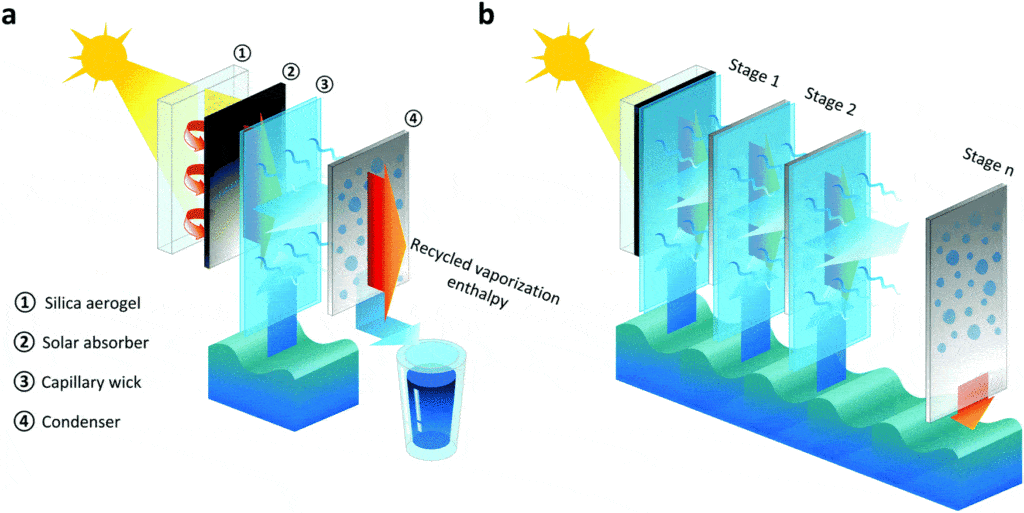A team of researchers from the US and China has developed a passive, solar-powered desalinization system that could quench the thirst of remote, arid coastal areas on the cheap.

The system employs several layers of solar evaporators and condensers stacked on top of each other in a vertical array, topped off with an insulating layer of (transparent) aerogel.
Salt-B-gone
“When you condense water, you release energy as heat,” says corresponding author Evelyn Wang, professor of mechanical engineering and head of the Department of Mechanical Engineering at MIT. “If you have more than one stage, you can take advantage of that heat.”
The system uses heat released by each layer to take salt out of seawater, eventually yielding drinkable water. Essentially, it’s a series of solar-powered liquor stills all working in tandem — the energy released by each layer (or ‘stage’) is captured by the next one and re-used. The team showed that their rig can achieve a very impressive 385% conversion rate of sunlight into energy used to evaporate water.
The flat panels absorb heat from sunlight and transfer it to the water, making it evaporate. As the vapor rises, it encounters the next stage, where it condenses on the surface of a new panel. This also helps to transfer heat from the vapor to the receiving panel. Turning water vapor into liquid is as simple as cooling it down; in a traditional still, waste heat from the vapor is released into the environment. The team designed their multi-layered evaporator specifically to retain and reuse this energy, boosting its overall efficiency and speed.
In theory, extra layers can be added to make the system even more efficient at churning our drinkable water, but each layer means more cost and weight. They settled on a 10-stage evaporator as an acceptable compromise between cost and efficiency and installed it on an MIT building rooftop.
They report that the device yielded 5.78 liters per square meter of solar collecting area (1.52 gallons per 11 square feet) per hour, or about twice as much as any other passive solar-powered desalinization system, according to Wang. The still showed no signs of salt accumulation and didn’t produce any brines that needed to be disposed of, the team adds, meaning that the still can be set out in “a free-floating configuration” during the day
The device is still at a proof-of-concept stage, and the team plans to further refine it — they plan to double its efficiency. It’s also built from inexpensive materials, such as a commercial black solar absorber and paper towels. The aerogen layer on top is the single most expensive component, but the team says less expensive insulators could be used as an alternative.
Ultimately, the team plans to scale-up their device and tailor it for commercial use. They hope the still — which they call a thermally localized multistage desalination system — will help provide drinking water for developing areas that lack reliable electricity but have ample seawater and sun.
The paper “Ultrahigh-efficiency desalination via a thermally-localized multistage solar still” has been published in the journal Energy & Environmental Science.
Was this helpful?



